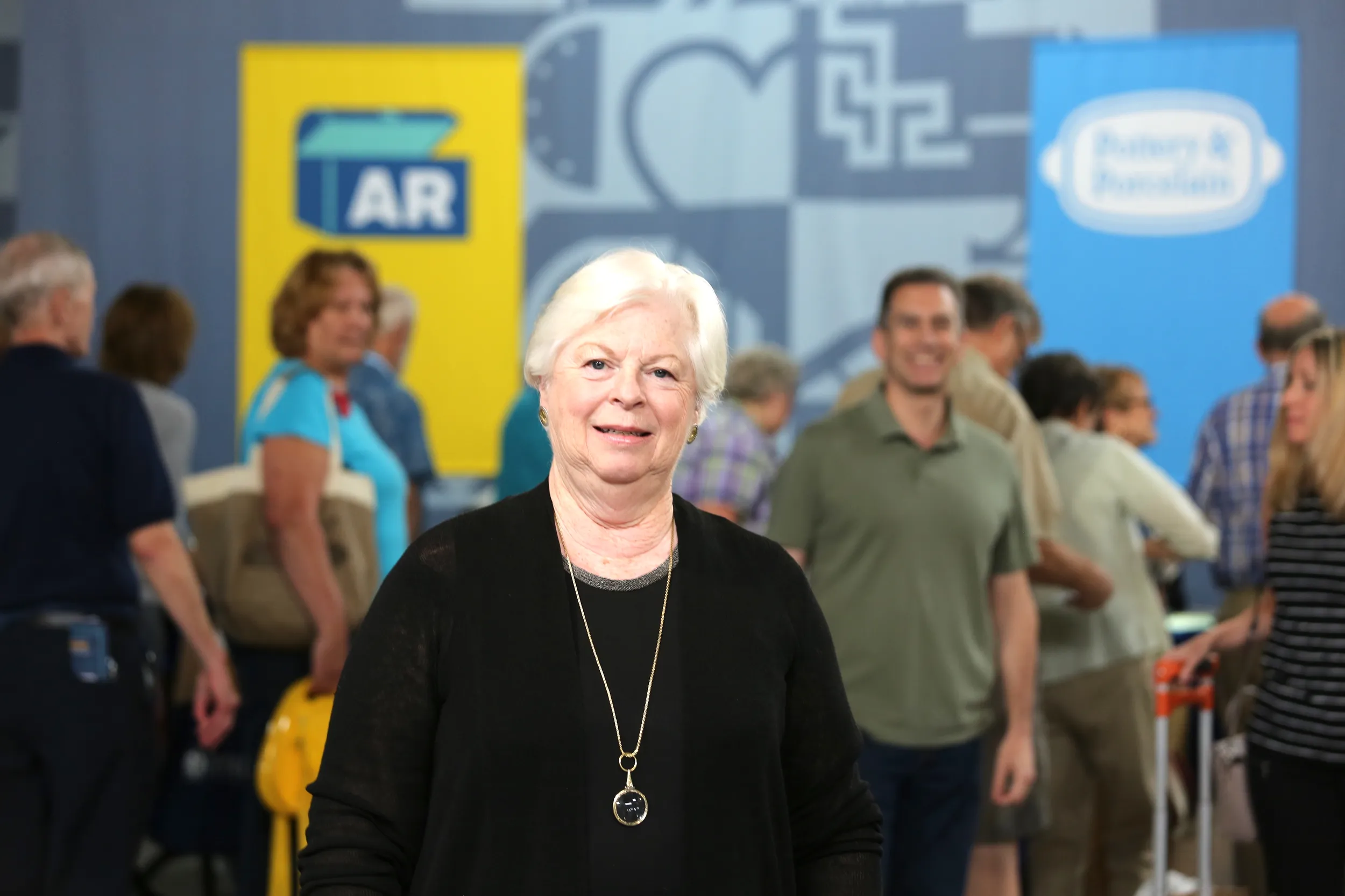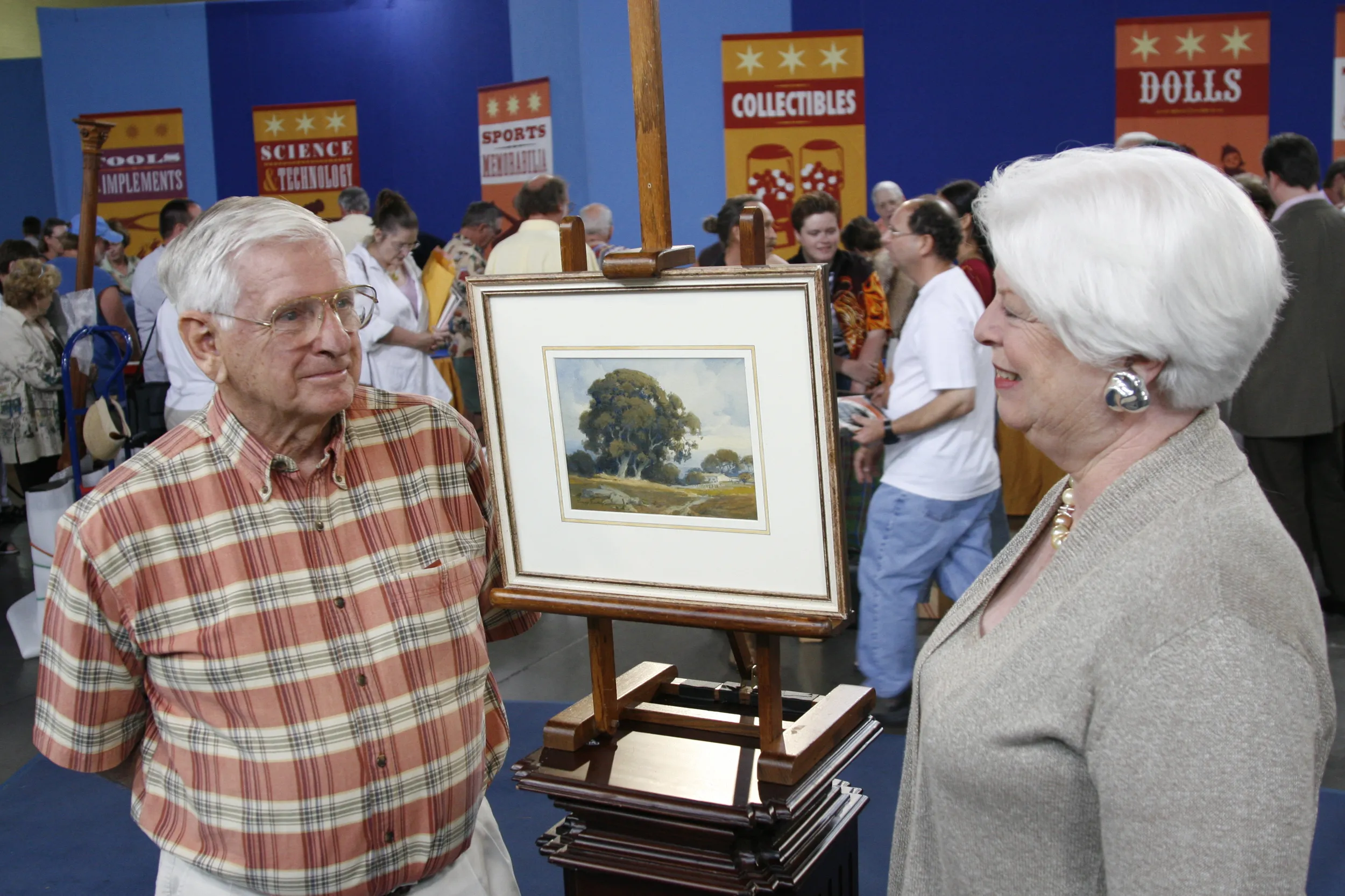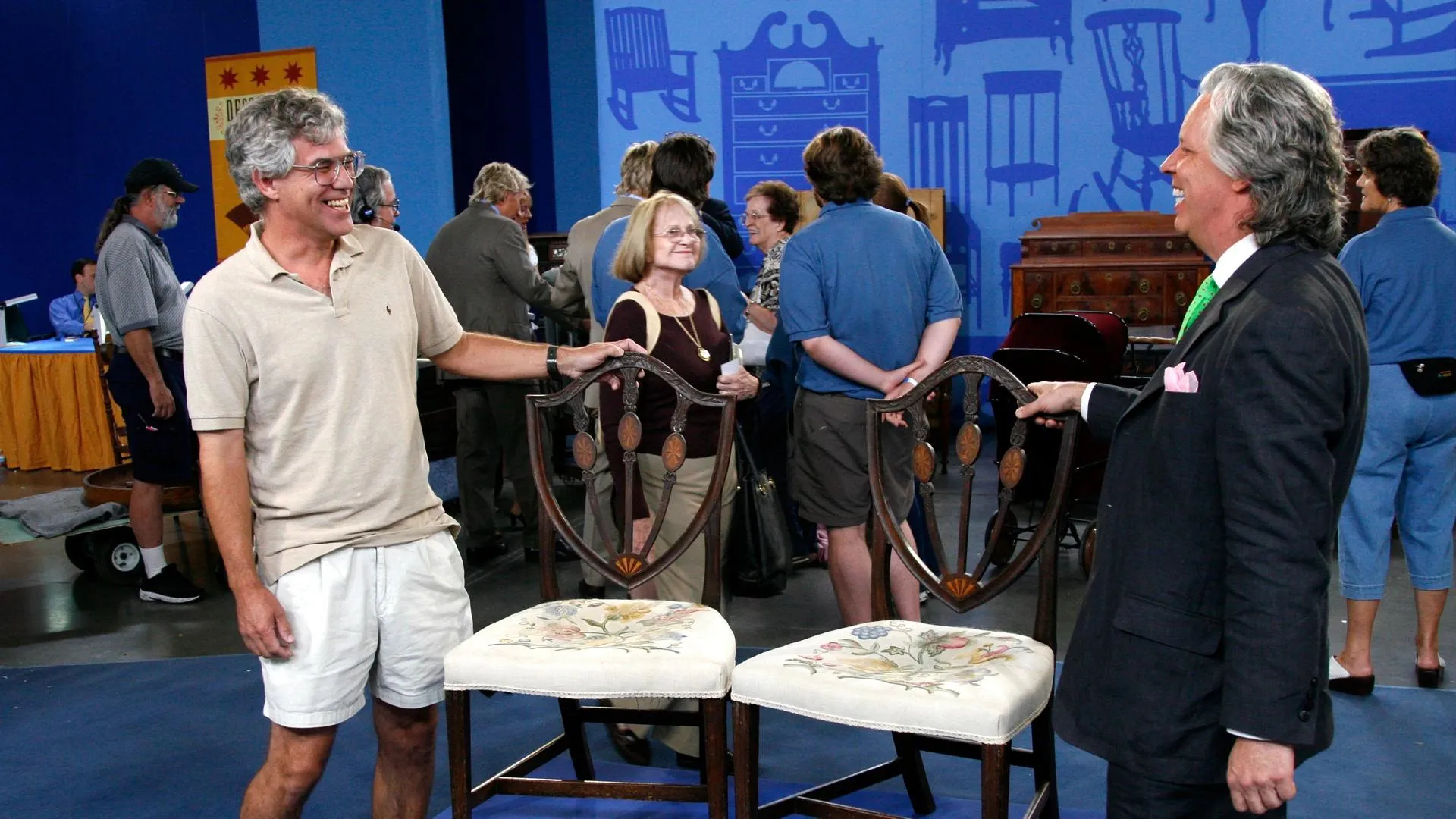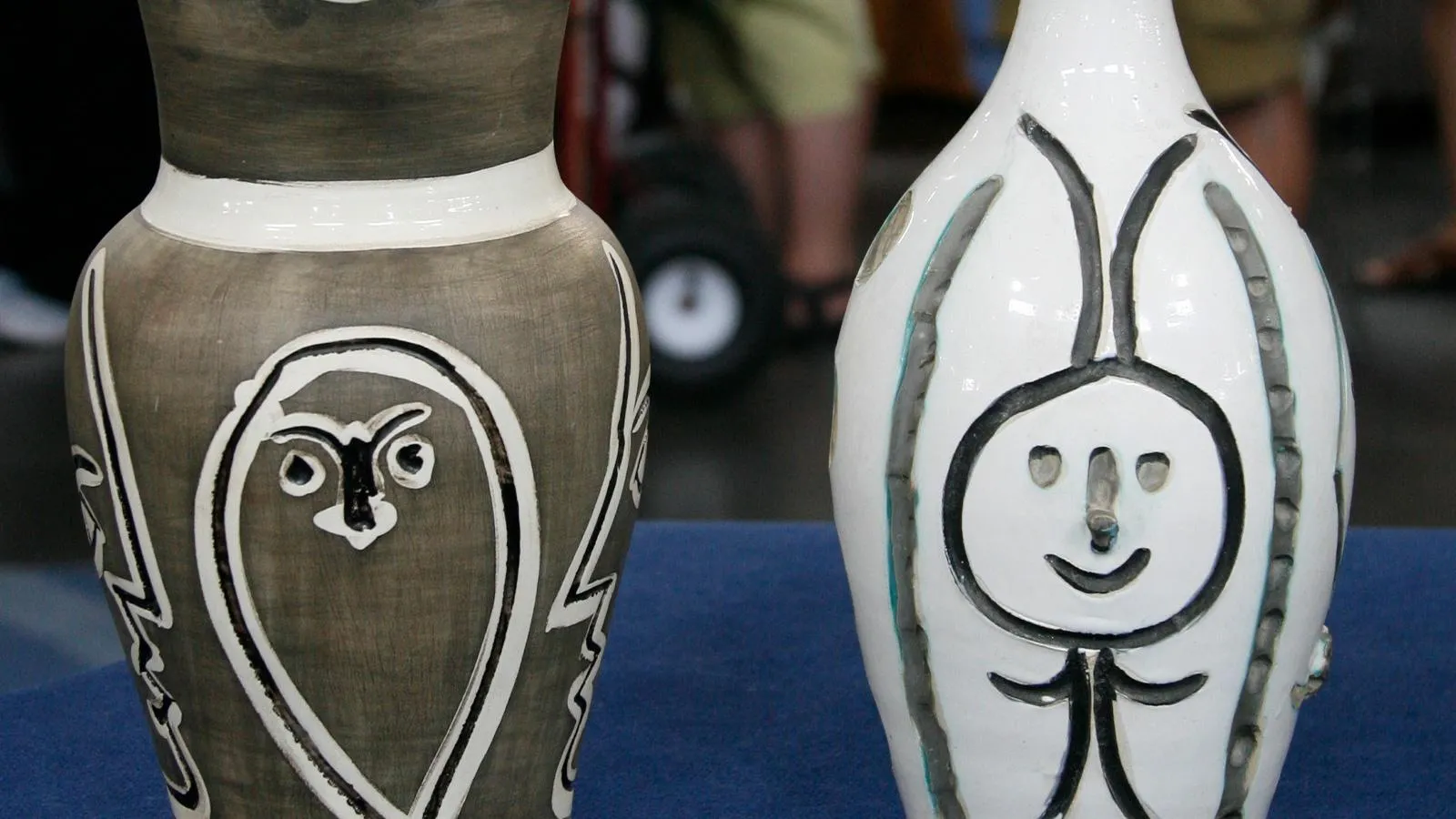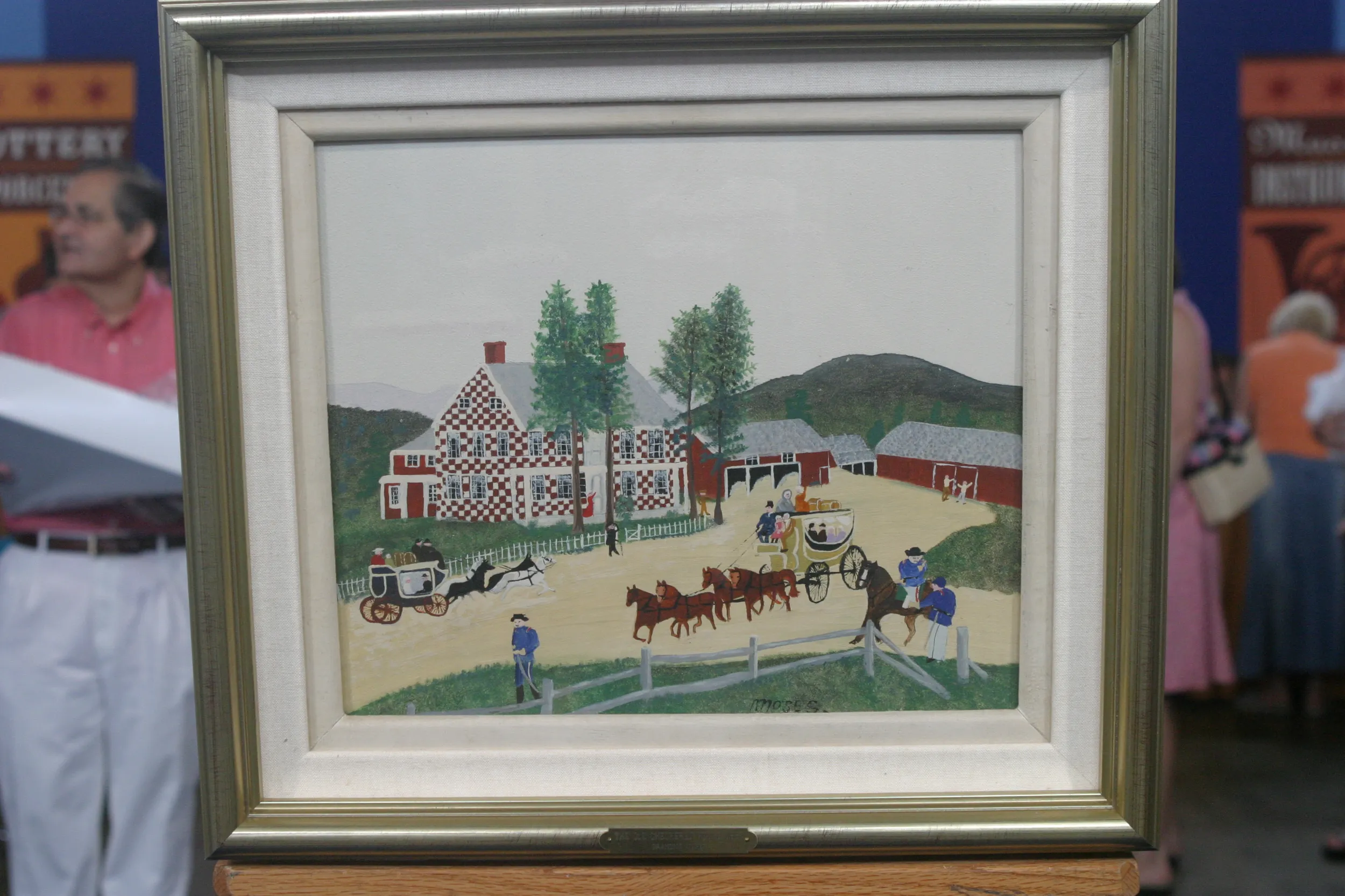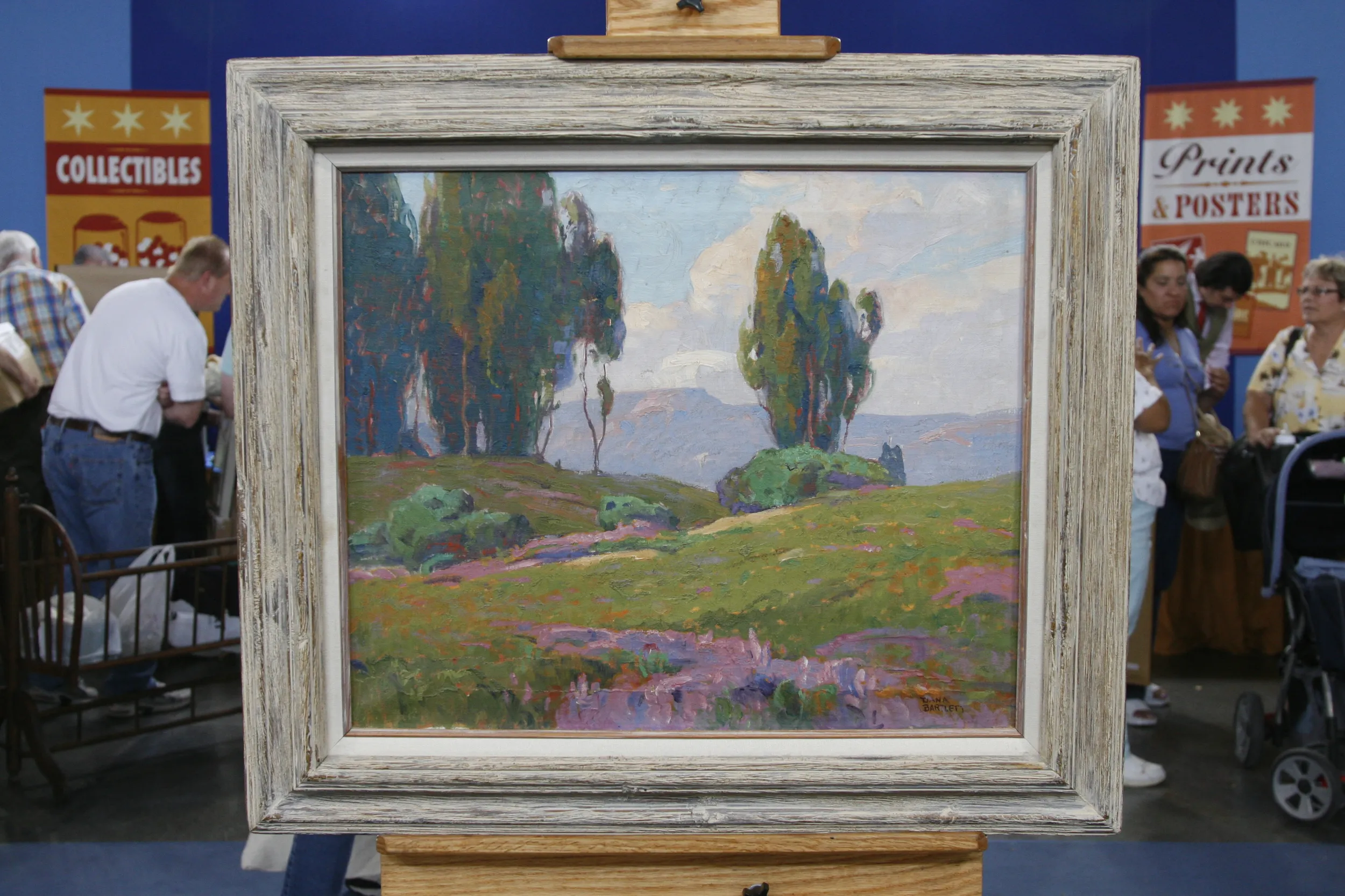GUEST: I got it from my father after he died. He was a diagnostician or an internal medicine doctor in San Francisco, and he was a member of one of the men's club there. And the man who ran the dining room, wife got very ill. It turned out she was dying of cancer, and my father took care of her. And when it was all over, he refused to give the man a bill of any sort, and shortly thereafter, this appeared in my father's office.
APPRAISER: He was born in San Francisco, and Percy Gray was of English heritage, which makes it interesting to me that he painted in watercolors as much as he did. I think the English watercolor tradition was carried on in his family. Many of the California regional painters worked in oil, but he worked in oil and switched very early on in his career to being primarily a watercolorist. Most of the literature will tell you that he changed his signature from block letters into this script signature in 1910, so we know it has to be after 1910. It's pretty hard to date it more specifically than to say it was painted between 1910 and the end of his life around 1950. There's a consistency to his style during that period. Another thing you have going on with Gray, which I think is interesting, is that rather than being one of those brilliantly colored California Impressionist painters, he painted more in what's called a tonalist style, which is the more muted, dreamier, softer, quieter style. And there's a lot of interest in tonalism in America now. As far as the value is concerned, if you were to see this picture at auction today, I suspect the estimate would be somewhere in the $10,000 to $15,000 range.
GUEST: I beg your pardon?
APPRAISER: Between $10,000 and $15,000. Um, I hope that's not a disappointment. (laughs) Watercolors by Gray have sold at auction for as much as $50,000, but they tend to be quite a bit larger and somewhat more colorful than this.
GUEST: Wow, had no idea.
